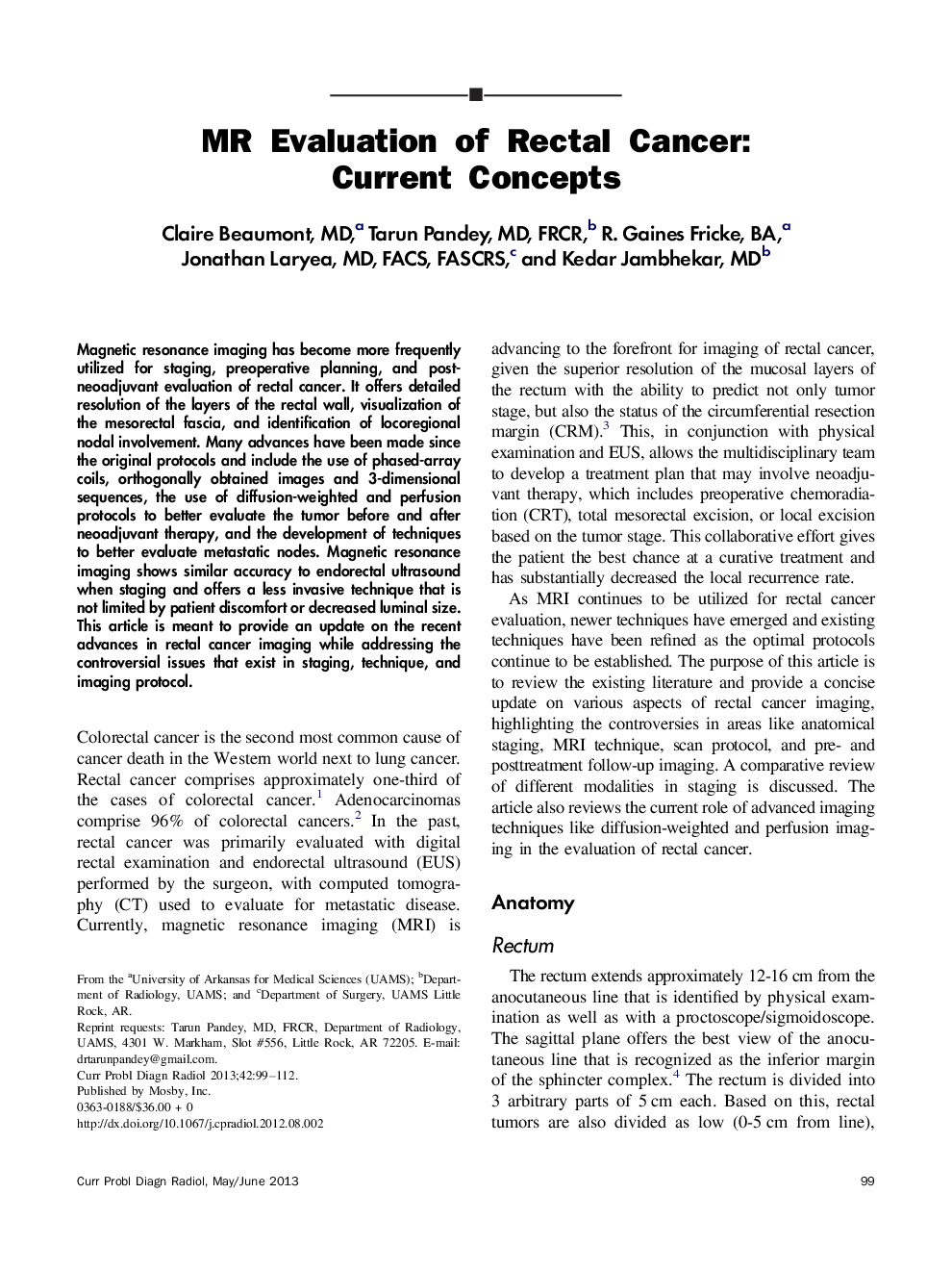| Article ID | Journal | Published Year | Pages | File Type |
|---|---|---|---|---|
| 4223616 | Current Problems in Diagnostic Radiology | 2013 | 14 Pages |
Magnetic resonance imaging has become more frequently utilized for staging, preoperative planning, and post-neoadjuvant evaluation of rectal cancer. It offers detailed resolution of the layers of the rectal wall, visualization of the mesorectal fascia, and identification of locoregional nodal involvement. Many advances have been made since the original protocols and include the use of phased-array coils, orthogonally obtained images and 3-dimensional sequences, the use of diffusion-weighted and perfusion protocols to better evaluate the tumor before and after neoadjuvant therapy, and the development of techniques to better evaluate metastatic nodes. Magnetic resonance imaging shows similar accuracy to endorectal ultrasound when staging and offers a less invasive technique that is not limited by patient discomfort or decreased luminal size. This article is meant to provide an update on the recent advances in rectal cancer imaging while addressing the controversial issues that exist in staging, technique, and imaging protocol.
